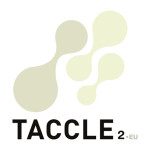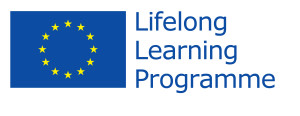Age: 8 – 12 yrs
Overview
The PhotoStory is a free software from Microsoft that allows you to make videos from a collection of images, to which you can add sound (narration, music) and motion (effects and transitions). It is an excellent tool for working with young children for being very easy to use.
The pedagogical use this tool for creating digital stories is very interesting because it makes the production process fun.
Description
Ask someone outside the class to come and tell a story to the students. It can be a school librarian, a storyteller or a parent. Explain to the students that that will later be asked to recreate that story but stop them from taking any notes. Instead, encourage them to listen carefully.
After hearing the story, the teacher helps students remember the main moments of the narrative, guiding them with some questions. After having identified the main aspects of the story, students will produce drawings that represent those key moments. They can use a free drawing software or do it on paper.
Based on their illustrations and using their creativity and imagination, the children are asked to write small texts to add to the images. They can try to retell the story they heard or go for a recreation of it based on the drawings.
Finally, to start the Photo Story project, students gather the images to one folder. If they were done on paper, scan it or take pictures of it using a digital camera or a mobile. Once the pictures are on PhotoStory, help them work out how they can personalize transitions and movements of the images, so that they get the motion the prefer. Then, for each picture, add the text produced and, if meaningful, choose a musical background for the story.
The videos can then be posted on YouTube and embedded on the school website or the class blog, to show the students’ work.
What do I need?
- Computers
- Some drawing software or something to digitalize the drawings
- Photo Story installed on the computer. Get it in http://microsoft-photo-story.en.softonic.com/
Added value
Telling stories through images is a rich activity for children. It helps them become aware of the structure of the narrative (introduction, development and conclusion) and organize textual sequences. It also develops oral and written production because there is space for freedom of expression of students, allowing them to expand their vocabulary.
Also, retelling a story from illustrations done can lead to the creation a different narratives, more or less alike the original version.
The pleasure of communicating with others with a communicative purpose is materialized on an online publication, giving more meaning to the work.
Hints and tips
Before starting the narration of the story, sit down with the students in a big circle. It’s useful to create a certain atmosphere of enchantment so that children pay close attention to the story.
If the drawings are done on paper, make sure they are clear and colorful enough to maintain a good quality when digitalized.
The narration should be trained before they start recording. When recording try to find a quiet place, with little or no noise, so that the sound is good enough. Maybe a room next to yours where only the students doing the recording can go.
It is recommended to record slide by slide and listen to the recording made right afterwards. This facilitates having to do it again- just delete it and record it again on that slide.
Other opportunities to use the same software
This software offers many possibilities for pedagogical use, such as creating reports of class experiments or projects, summaries of field trips, best moments of school events or any presentation of contents from different curriculum subjects.
By Helena Felizardo
Portugal
This post is also available in: Portuguese (Portugal)




 English
English Nederlands
Nederlands Deutsch
Deutsch Italiano
Italiano Español
Español Português
Português Română
Română Cymraeg
Cymraeg
No comments yet.